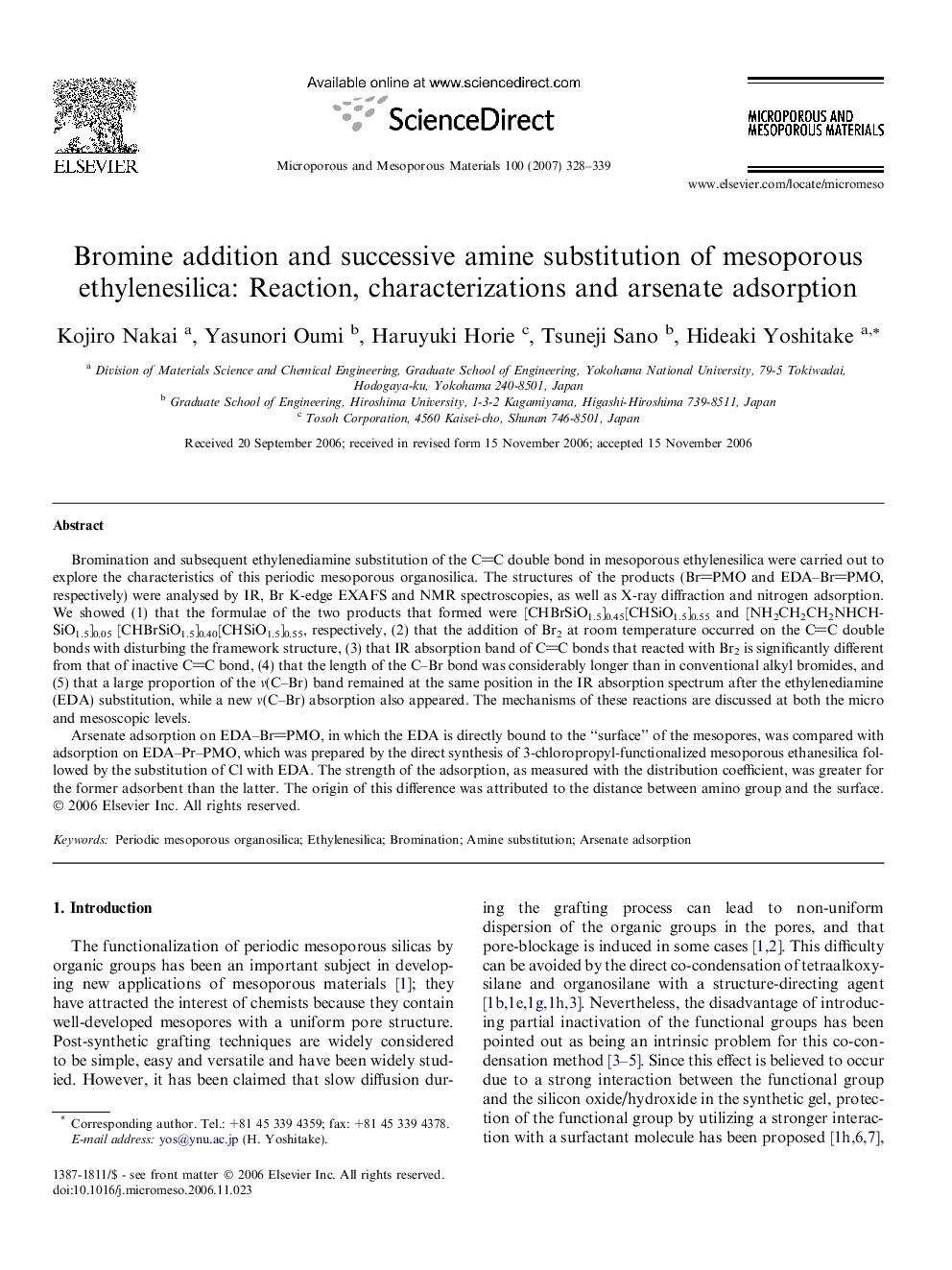| Article ID | Journal | Published Year | Pages | File Type |
|---|---|---|---|---|
| 76570 | Microporous and Mesoporous Materials | 2007 | 12 Pages |
Bromination and subsequent ethylenediamine substitution of the CC double bond in mesoporous ethylenesilica were carried out to explore the characteristics of this periodic mesoporous organosilica. The structures of the products (BrPMO and EDA–BrPMO, respectively) were analysed by IR, Br K-edge EXAFS and NMR spectroscopies, as well as X-ray diffraction and nitrogen adsorption. We showed (1) that the formulae of the two products that formed were [CHBrSiO1.5]0.45[CHSiO1.5]0.55 and [NH2CH2CH2NHCHSiO1.5]0.05 [CHBrSiO1.5]0.40[CHSiO1.5]0.55, respectively, (2) that the addition of Br2 at room temperature occurred on the CC double bonds with disturbing the framework structure, (3) that IR absorption band of CC bonds that reacted with Br2 is significantly different from that of inactive CC bond, (4) that the length of the C–Br bond was considerably longer than in conventional alkyl bromides, and (5) that a large proportion of the ν(C–Br) band remained at the same position in the IR absorption spectrum after the ethylenediamine (EDA) substitution, while a new ν(C–Br) absorption also appeared. The mechanisms of these reactions are discussed at both the micro and mesoscopic levels.Arsenate adsorption on EDA–BrPMO, in which the EDA is directly bound to the “surface” of the mesopores, was compared with adsorption on EDA–Pr–PMO, which was prepared by the direct synthesis of 3-chloropropyl-functionalized mesoporous ethanesilica followed by the substitution of Cl with EDA. The strength of the adsorption, as measured with the distribution coefficient, was greater for the former adsorbent than the latter. The origin of this difference was attributed to the distance between amino group and the surface.
